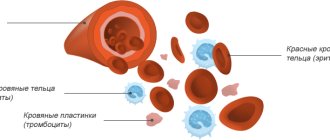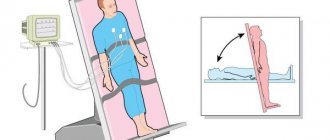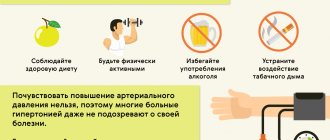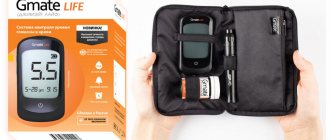Secrets from the pros.
Hello! “Three Cripples” is in touch and the third running season, which we are doing together with adidas: we tell beginners how to motivate themselves for their first run, how to run correctly, how not to get injured and much more. Experts and coaches from the AR Moscow running community help us.
Not all the texture fit into the audio, so we publish the best highlights of the episodes with Vasily Permitin and Sardana Trofimova in text.
What is long-distance running and how to prepare for it
Vasily Permitin: According to official terminology in athletics, long distances are 5,000 and 10,000 meters and a half marathon. But usually this includes the marathon. Interesting fact: when we talk about running at a stadium, we talk about the distance in meters – running 5,000 and 10,000 meters. If we talk about the highway – 5 km, 10 km. Some people don't know this and get confused.
The main feature of long distances is that they are run in an aerobic mode. Therefore, during preparation, a large volume of slow running is necessary to build an aerobic base. This is the basis without which it is impossible to overcome the distance normally. Well, that is, you can run, but to run fast or improve your personal best, you need to run at a calm, slow pace. The volume should increase smoothly.
Then we add intensive developmental training, which should be built in in doses and combined with slow volume running. And you can also add strength training to prevent injury in the first place. Nowadays, cyclic sports, especially running, are very popular, and people who get off the couch immediately begin to fanatically run a lot, run fast, and this leads to injuries due to an incorrect balance in training and the lack of a sports base.
Why do adults run long distances?
Vasily Permitin: In amateur sports, it so happens that everyone thinks it’s cool to run a marathon, so everyone starts running long, very long distances.
Basically, of course, everyone runs half-marathons and marathons, but there is also a trend for short distances. Just because they're short doesn't mean they're lighter or less prestigious. There are amateur competitions at the stadium, or, for example, we in the adidas Runners community hold the night mile - a cult race that was invented in the USA. This is a very cool format when you get up to the start line and all you know is that you have to run a mile. But the distance is not marked in any way. You run, and along the way they show you: turn this way, then that way. We have already done something similar in Moscow and will continue to do so.
If you look at professional sports, then when a child comes to athletics as a child, he starts with shorter distances in order to receive a dosed load and develop speed-strength qualities. They develop well in childhood, and after some time, around the age of 18, it is already very difficult to develop them. Therefore, the speed-strength base is laid in childhood, and children run short intense distances - sprints and medium distances, 800 m - 1,000 - 1,500 - 2,000, well, maybe 3,000 meters.
Then, with well-developed speed and strength qualities, children run more and add training volume. A frequent situation is when, up to a certain age (including adulthood), a professional athlete runs 1500-3000-5000-10000 meters. Only then does it move on to the half marathon. Many strong marathon runners, as a rule, were “average” athletes in the past.
Is Regular Slow Cardio Useless?
Just because the fat-burning zone and rapid weight loss are not related does not mean that cardio is useless.
First, it's a safe way to burn in a few extra calories without restricting your food intake too strictly.
Secondly, it is a way to actively recover after strength training (on a separate day). Blood circulation in the body improves, more nutrients enter the muscles and waste products are removed from them faster.
Thirdly, it is control over overtraining. If you do a lot of strength training, additional high-intensity cardio (intervals, etc.) is not a good idea for your muscles, joints, or central nervous system.
Fourth, if you have heart disease and your doctor has told you not to exercise intensely, monitoring your heart rate during exercise is a good way to stay in a heart-safe zone.
Fifth, physical fitness dictates the intensity of the workout. If you are overweight or have joint problems, only low-intensity cardio is recommended for you.
Pulse zones
Vasily Permitin: There are many classifications. Standard – 5-zone. All others are derivatives of it.
1 pulse zone - from 55 to 75% of the maximum pulse (hereinafter referred to as heart rate, heart rate - editor's note). There is a formula for calculating maximum heart rate (220-age), but it is quite conditional; it is better to do laboratory testing. The easiest way to calculate zones is to run some distance like 5 km very quickly, look at your maximum heart rate and calculate from there.
The first zone is restorative, aerobic, that is, energy supply occurs in an aerobic mode, with the help of oxygen. It is used for recovery, warm-up, cool-down. Everything is at a calm pace.
Pulse zone 2 (75–85% of max. heart rate - editor's note) is also low-intensity, but it uses fat as fuel to the maximum; this zone is relevant for the development of endurance. We do long training sessions there.
Between zones 2 and 3 is the aerobic threshold.
Pulse zone 3 (85–90% of max. heart rate - editor's note) is mixed, also called the “gray zone” or “black hole”. This is the pulse zone in which 50% fat and 50% carbohydrates are consumed. The peculiarity is that this is a high-intensity zone: the energy consumption in it is very high, but it feels comfortable - it is very easy to get into it.
Stephen Seiler, a sports scientist from the United States who has lived in Norway for more than 25 years, developed the concept of 80/20 - a ratio of low-intensity and high-intensity training. Over many years of research, he found that in all cyclic sports (cycling, skiing, athletics, rowing, swimming), as a rule, athletes intuitively came to the conclusion that they train 80% at low intensity, and 20% at high intensity. .
Stephen says that if you want to get into an overtrained state, the shortest route is to train in a mixed zone every day. It feels quite light, but at the same time it is quite expensive. The deceit lies in the fact that a person does not feel when he gets there. If you use it for developmental training, that is, consciously, then everything is fine, it is effective. But if you run in it during a light workout, you may end up overtraining over time.
Between zones 3 and 4 there is a boundary called the “second lactate threshold” or “anaerobic metabolism threshold,” abbreviated as PANO. This is a key value for endurance sports and directly correlates with performance.
Zone 4 (90–95% of max. heart rate - editor's note) is anaerobic, in which energy supply occurs without the participation of oxygen, due to 100% carbohydrates. The whole point of endurance training is to move the TANO (offensive boundary of zone 4).
PANO is expressed in pulse values. My PANO is about 183 beats per minute. How to track progress: The longer I train, the faster I should run at this heart rate. For example, at the beginning of training, my running pace on PANO (at a heart rate of 183 beats/min) can be 3:20/km, and as my fitness increases, it can be 3:10-3:05-3:00/km. The higher it is, the better.
Zone 5 (95–100% of max. heart rate - editor's note) is a high-intensity zone, called the MOC zone - maximum oxygen consumption. It is not particularly relevant for beginner athletes - they should have virtually no training in this zone.
What is the problem?
So there is a heart rate at which the highest percentage of calories burned is from fat. This gave rise to the idea of the need to exercise only in the “fat burning zone”.
But just because more fat is used as a percentage, does not mean that a lot of fat is wasted in absolute terms.
Example
- You walk slowly at a speed of 3 km/h and burn 5 kcal/min. You burned 300 calories, almost all of them from fat.
- You run at a speed of 9 km/h and burn 15 kcal/min. You burned 900 calories, but only half of it was fat. In percentage terms, you burned less fat, but in absolute terms - 450 calories, and that's more. Obviously, we burn more calories when we exercise intensely.
Lyle MacDonald writes:
High-intensity cardio may be more effective for weight loss. Under these conditions, you deplete your glycogen stores since carbohydrates are your primary source of fuel. But after training at rest, the body will burn more fat, and the carbohydrates supplied with food will go into glycogen. But in the grand scheme of things, everything you burn during a workout is less important than what you burn throughout the day (i.e., you're in a calorie deficit).
Running technique
Vasily Permitin: Running technique develops for a combination of reasons and does not change. Anthropometry, muscle development, structural features, and psychology greatly influence the movement pattern. You can slightly adjust your running technique and work on it through general physical training, strength and jumping training, and special running exercises.
At adidas Runners we have a separate service - running technique analysis. You can analyze the technique and identify some gross mistakes that a person is making right now: for example, he is running on his toes. Running from the toe overloads the Achilles tendon and periosteum. Or a person runs from his heel and bumps into it - this is a huge load on the musculoskeletal system, which can lead to injury.
The technique can be adjusted, but not changed, the movement pattern will still remain as it is. In general, running technique optimizes and becomes more effective as your form and training volume grow.
You need to run naturally, breathe through your mouth and nose. And then some run and suffocate: they say you have to breathe through your nose.
The importance of heart rate during training
Monitoring heart rate during training is necessary to:
- determine the intensity of classes;
- effectively use oxygen to generate energy during aerobic exercise;
- choose a load to develop endurance;
- prevent stress on the cardiovascular system.
Those who have problems with the heart and blood vessels should be especially careful during exercise. For such patients, the load is selected based on an ECG machine with tests on a bicycle ergometer.
A sudden achievement of maximum heart rate is also contraindicated for those who have not previously exercised at all. Like other muscles in the human body, the heart needs time to reach a certain exercise regime. The duration of the preparatory period should be from three to six months.
With the correct load, heart rate should be measured several times:
- before classes;
- after warming up;
- at the end of the main part;
- when the load decreases;
- after classes during the cool down process.
IMPORTANT! Pulse is considered a more objective criterion of literacy in classes, in contrast to well-being.
Interval and tempo training
Vasily Permitin: Interval and tempo training is the main type of developmental training that athletes use to improve results. All plans consist of a combination of low-intensity and high-intensity training.
Tempo training is running in a threshold zone, usually at the beginning of the 3rd, that very mixed, or between the 3rd and 4th zones at the threshold of anaerobic metabolism. This is a fairly long moderate-to-hard run. The intensity is best controlled by pulse. Very often amateurs make the mistake of running tempo training in zone 5, but this has nothing to do with tempo running - this is already a competitive mode.
Interval training is aimed at developing slightly different qualities. As I already said, the threshold for anaerobic metabolism can be developed and shifted with different training protocols. Accordingly, interval work can be either speed work to develop speed qualities and the ability to run quickly, or work to develop the ability to run for a long time at high speed. Due to this, the anaerobic threshold shifts. Depending on the tasks, the intensity and duration of fast segments, as well as the duration of rest intervals, are selected.
What to do if your sneakers rub
Sardana Trofimova: Your feet may chafe because the sneakers are new and not yet worn in. You also need to be careful during long workouts: when you run for a long time, you sweat, and salt comes out. It can lead to chafing.
That's why before every long workout and before a marathon, I smear Vaseline on all my fingers, between my fingers and in places where it might rub. Sometimes even my top rubs. Therefore, I smear any places where chafing may occur with Vaseline - it’s enough for me for the entire distance, I can easily run a marathon.
I would also like to advise amateurs not to wear new sneakers and new socks to the competitions. You definitely need to wear them for at least a week, and run in them at least a couple of times, so that the sneakers become softer. And you also need to run in new socks at least three times and wash them.
conclusions
The fat burning zone technically exists, but that doesn't mean that training will automatically burn more fat in absolute terms.
To lose weight, it is fundamentally important to eat in a calorie deficit. Exercise works great as a complement to your diet. And in first place is strength training. Cardio is a way to burn an extra few hundred calories without considering its health benefits.
The type of cardio and intensity you choose depends on your health, fitness, strength training program, and what you personally like best.
How to dress for different weather
Sardana Trofimova: We have a cold winter in Yakutsk, so at home I train down to -30°C. When it’s very cold, I leave for training camp. I dress so that when I go outside I don’t feel hot. It should be a little chilly. If you dress warmly, you will sweat a lot, and at the end of the distance you may get winded.
We also run at -50°C, but there we need completely different equipment. This is extreme for most amateurs, but it also has its advantages, because in addition to training functionally, you also train your muscles: you have a lot of clothes, they interfere with movement. When you run in the snow, you feel slippery, and you also improve your physics.









